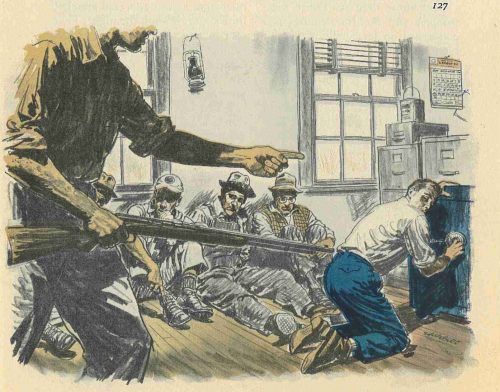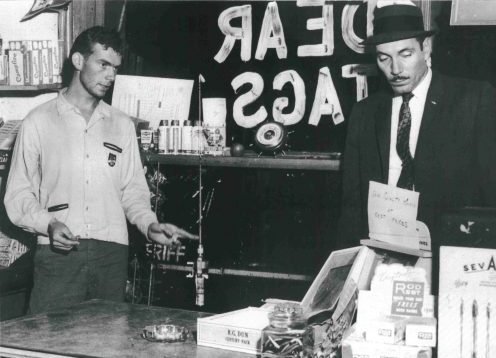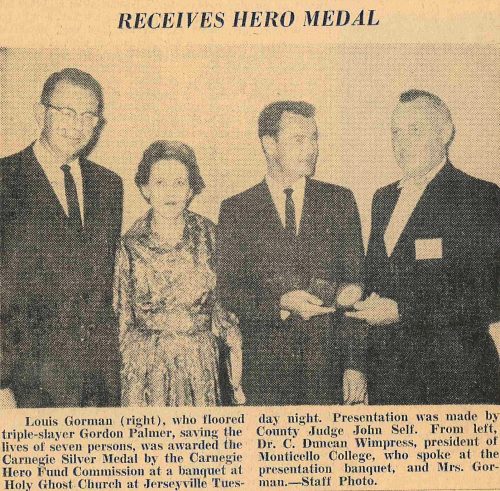Held hostage for hours, Carnegie Hero Louis Gorman saves seven colleagues, takes down man who had murdered three

The events leading up to the 1959 heroism of Louis Gorman in behalf of seven other men held hostage at their workplace for several hours began with a hunt for a 21-year-old Jerseyville, Ill., man wanted on suspicion of committing three homicides across the Midwest. Jerseyville police spotted the man arrive home but as they made their presence known, the man fled by car and by foot, eluding officers once again.
Upon word that the assailant was seen, more than 100 police, state troopers, and sheriff’s deputies responded to Jerseyville and hurried to place roadblocks on every route out of town.
They successfully had the town surrounded, but that did not stop the violence, as the man shot and killed a train brakeman who threatened to reveal his hiding place in a creek.
Following the killing, the assailant made his way to the Jerseyville Gorman Brothers’ Builders supply firm on Franklin Street and broke out a glass panel of an exterior door that opened to a corridor between a private office and the building’s men’s bathroom. Once inside, he cut a piece of cardboard and used it to replace the missing panel and camouflage the damage. He then concealed himself in the private office for the rest of the night.
Meanwhile the residents of Jerseyville endured the noise of planes, helicopters, and bullhorn announcements about the killer through the night.
Around 7 a.m. the following day, co-owner Gorman arrived to the office with truck drivers Robert P. Cordes and Charles J. Kroeschel. Their ignorance to the man’s presence vanished when Kroeschel noticed broken glass on the floor. As the last to leave the previous night, he told Hero Fund Case Investigator Irwin M. Urling, that he felt unnerved realizing the door panel had been broken since then.
“Louis, I think that man’s around here somewhere,”
Kroeschel called out to Gorman, who was in the bathroom.
Just then, the assailant appeared, armed with a .22-caliber semiautomatic rifle that held 19 rounds. With 35 more cartridges in his pocket, the man ordered Cordes and Kroeschel to raise their hands, enter the office, and sit with their backs against the south wall.
He positioned himself in the doorway, which was obscured from outside view. He then ordered Gorman out of the bathroom.




